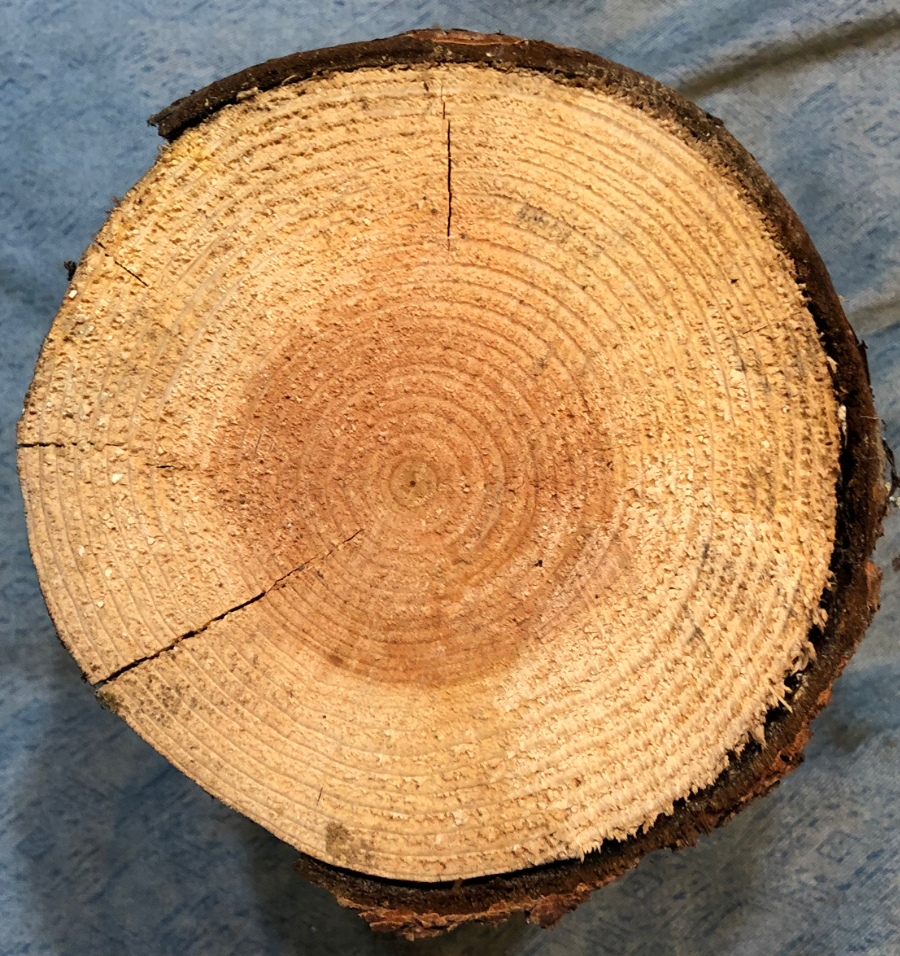Here’s a photo of a piece of wood before I put it into the wood-burning stove:

You can see the tree rings quite easily. There are 22 tree rings, meaning that this piece of wood started forming 22 years ago. Here’s a closeup of those rings:
Look closely. Each ring is composed of two parts: a thick, light inner ring followed by a thin, dark outer ring. These represent one year of growth. The thick portion is called “early wood” or “spring wood”. It is the wood that grew during spring, when there was lots of water and the tree grew as quickly as it could. To grow fast, it threw together a low-density wood that doesn’t have a lot of strength, but gets the tree advantageous height quickly. Once the spring rains stop and summer sets in, the supply of water diminishes dramatically, and the tree starts making “late wood” or “fall wood”. This wood can only be built slowly, so the tree makes it strong and dense.
Look what happens when I put this piece into the stove:
Note that the thin rings, the late wood is burning hotter than the thick early wood. That’s because the late wood is denser and contains more burnable wood. The early wood is almost porous, full of microscopic holes that were once filled with sap. It doesn’t have as much fuel and so it burns at a lower temperature.
By the way, this is why charcoal burns hotter than wood. All the low-fuel value stuff has been cooked away in the charcoal, so you get nothing by high-fuel charcoal.
